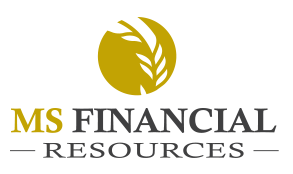By now you’ve likely heard of SECURE Act 2.0, passed into law on December 29, 2022, as part of the greater Consolidated Appropriations Act of 2023.
To save you from reading any or all of the 4,000+ pages, we’ve compiled some high-level, “best of the best” excerpts that apply to both experienced savers and those just starting their retirement planning journey. We were glad to see that the legislation treated retirement planning so favorably.
- Intended to boost retirement plan participation, automatic plan enrollment will become the rule for employers with more than 10 employees and who start a new retirement plan after December 29, 2022. A three-percent minimum of earnings will be withheld, and there are provisions for employee opt-out. This becomes effective in 2025. According to 2021 government statistics, about 25% of private industry workers with access to an employer’s plan were non-participants. For government workers, that portion was less—only 10%. The legislation aims to get more workers on the road to retirement saving.
- Required Minimum Distributions (RMDs), which as recently as 2020 were mandated in the age 71 year, are newly delayed until the age 73 year in 2023, and then the age 75 year in 2033. Prolonging tax deferral can have significant financial benefits. Not only can your portfolio remain intact (and hopefully growing) from the two-year “extension,” you may avoid jumping into a higher tax bracket by not taking those distributions as income sooner. In short, your assets can grow tax-free until the now-delayed distribution occurs. Additionally, the historically prohibitive 50% penalty for missing an RMD has been reduced to 25%, and then only 10% if remedied within two years. When RMD years occur, it is advantageous to take the distributions early in the calendar year if the account holder is seriously health-compromised. Complexities involving beneficiaries or tax and estate preparations can occur if an account holder passes away before an annual RMD is taken.
- Fortunately, charitably minded savers age 70 ½ need not wait until age 73 to take advantage of opportunities to give or potentially save. Those in the age 70 ½ – 73 age window can make Qualified Charitable Distributions, (QCDs) pre-RMD, directly transferring retirement assets to a qualifying organization. This strategy rewards three ways: recipients receive needed and valued assets; the gift is not considered as donor income; and donors avoid incurring taxes on any gain. Note that QCDs can be up to $100,000 annually per person; $200,000 per married couple. And thanks to SECURE 2.0, these dollar limits can grow beginning in 2024 by applying current-year inflation rates.
RMD-eligible donors can still apply gift amounts towards satisfying their annual RMD.
- Catch-up contribution amounts are rising. This is especially welcome news if you’ve reduced your retirement contributions due to recent inflation or an untimely event like sending a child off to college; taking a badly needed, pandemic-delayed vacation; or replacing a car during a tight and expensive auto market. Workers aged 50 or older contributing to an employer-sponsored plan can put away an extra $1,000 annually—up to $7,500—in 2023, and then beginning in 2025, at least $10,000 for those age 60, 61, 62 or 63.
Additional provisions of SECURE 2.0 include employers being able to contribute to Roth IRAs; easier access to retirement plan participation by part-time employees; and favorable reconsideration of the legacy 10% early withdrawal penalty for account holders facing health or natural disaster related circumstances.
Not unexpectedly, nuances may impact implementation of the new regulations. We welcome your call to discuss how any may apply to you.

